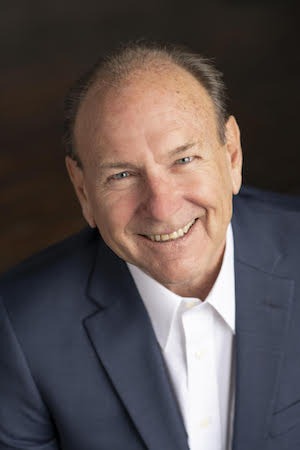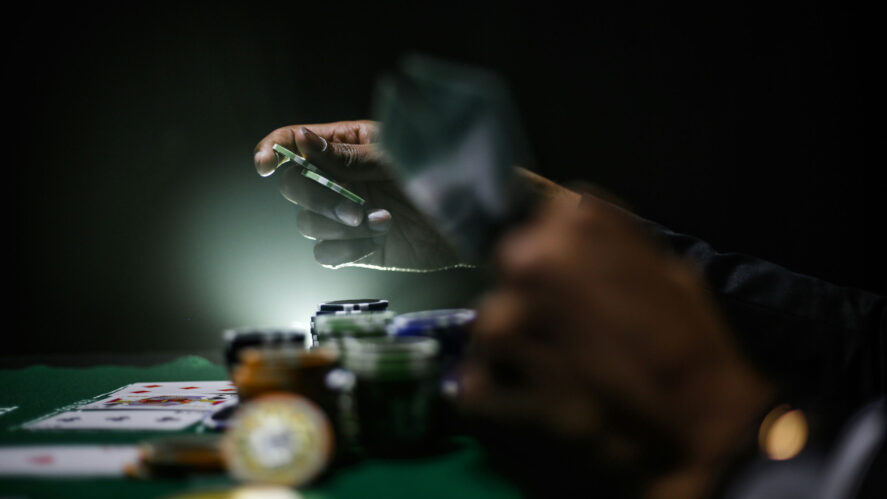Schuetz: Acclaimed Film ‘The Last Showgirl’ Evokes Stardust Memories
Las Vegas performers often go under-appreciated, as a former casino executive can attest
6 min

“I mean, Las Vegas used to treat us like movie stars. The costumes, the sets. We were ambassadors for style and grace.”
— Shelly, played by Pamela Anderson, The Last Showgirl
I had just joined the Stardust Hotel & Casino as its second in command and was getting to know the store. The president was a finance and accounting dude who generally found his office safe and comfortable. I was typically much closer to the floor near the moving parts of the operation.

The Stardust was generally understood to have been a mob joint, and through a long and arduous war with the Nevada Gaming Control Board, the past leadership had left the building.
That is not to suggest that the culture had been entirely transformed. Such things take time, for they permeate a facility at an amazing level of granularity. I kept my eyes open and my mouth shut as I went about learning about my new place of employment.
There may have been a bartender or three who were in business with some of the local girls, and I needed to stop that. There was a bit of a challenge with some missing slot keys and a really funny episode with the bell desk. You know, standard stuff back in those days. I was approaching my job the way one eats an elephant, and that was one bite at a time. The Stardust was big and had lots of moving parts.
I had come to understand that in my early days on the job, auditions were taking place in the showroom. We were looking for two dancers for our Lido de Paris show. Fifty dancers were there to audition, sifted out from hundreds of applications. A member of our existing cast was among the crowd of women, there to demonstrate what moves and steps the people making the hiring decisions wanted to see.
While involved in managing the casino by walking around, on the day of the auditions, I stopped into the showroom. The auditions were scheduled for the entire day. During my visit, someone was making announcements about how things would proceed, and all the women were gathered together and listening.
Our dancer was standing off to the side of the stage, just minding her own business, and she started a series of ballet moves that blew me away. It had nothing to do with anything; it was just how she chose to spend her spare time before the speaker finished and she was to begin her demonstration. It was stunning. It could have easily occurred at Palais Garnier as part of the Paris Ballet. I was amazed.
Las Vegas is many things; one is that it has been home to many incredibly talented people. Some of these highly talented people were dancers, and there were hundreds of them up and down the Las Vegas Strip.
It takes a lot to be a Vegas showgirl
We received a tremendous response when we put out a call for dancers, and we were but one of many shows in Las Vegas. One of the things most noticeable about these responses was the quality of the training and experience of the applicants. Vegas offered this rare opportunity to make a living dancing without having to move all the damn time worrying about the next gig. A dancer could settle in and have something approaching a life in a community. The women came from everywhere, even including Juilliard, the Broadway Company, and other known dancing environments. Many had worked in impressive shows.
We were also particular — no one under 5’9″ — and we wanted a specific look. In short, the women had to be incredible, or, otherwise stated, they had to be showgirls.
While I was involved with several casinos along the Las Vegas Strip that had great shows, when it came to showgirls, there was nothing like the Stardust.
I recently saw The Last Showgirl, directed by Gia Coppola and starring Pamela Anderson and Jamie Lee Curtis. It flooded me with memories of my time at Stardust. The movie took place at the tail of what could be called the Golden Age of Las Vegas, an era partially defined by the showgirl era. It was about a showgirl and her friend aging through an antiquating system. Of course, subplots added depth to the story, including the role of women in Vegas, motherhood, and relationships.
To me, it was all about the memories of a time long past.
A world unto itself
Of all the departments within a hotel-casino environment, the people involved in the resident shows form one of the most close-knit groups in the house. They are generally distant from the broader employee population, working during the evening hours. They are also characterized by high creativity and energy levels. It is not to exaggerate that the backstage area of a showroom is a world unto itself.
The emotion surrounding the Lido show was also dialed up fairly soon after I joined Stardust because the United States was beginning to see the devastation associated with the AIDS epidemic, and we suffered the loss of several of our male dancers. Casts are close and choreographed together in their actions, and when a terrible disease takes away a piece of that choreography, it touches the whole group. It reaches into the very soul of the show.
It was hard for these people to come to work, find out that a piece of their creative puzzle would never return because of AIDS, and then go out and amaze a packed house with a fantastic show. It would be an understatement to suggest that they were driven by the culture that the show must go on.
Another harsh reality of the showrooms was the physical pain that so many of the performers endured. Two shows a night, six nights a week takes a toll, and the labor conditions were not such that you could just take some time off and let things heal. People suffered strains and pains, and needing to take time off could become the beginning of the end of the opportunity to dance.
An unfortunate reality of all of this was that some of our people became dependent upon painkillers, and this often did not end well. When the pain or the drug was taking too great a toll on the body, well, it was time to hold another audition.
I would often be present backstage between shows or after the late show. I would often take our VIPs backstage to allow them to meet people and experience the scene. Occasionally, an issue needed to be monitored and sorted, be it one of the acts, the stagehands, the dancers, or who knew what? Sometimes, I went back to tell them I had watched the show again and found it excellent. No matter what the reason, the little village that was our show always fascinated me.
A detail about the Lido show that the reader may not be alive to is that among our dancers, we had a job classification of “uncovered.” While the costumes were amazing, featuring great feathers and ornamentation, some dancers performed with their breasts exposed. It was a part of the Vegas showgirl thing.
I once had a friend from my college days visit me, and I took him as my guest to the show. During the show, the maître d’ gave me a note that a few dancers wanted to visit with me between shows. My friend and I headed backstage after the show, and as he stood aside, several of the dancers discussed something they considered important. I heard their story and told them I would look into it and get back to them.
Later, as my friend was hanging with me as I did my rounds around the casino, he commented about the breasts of one of the dancers I met with. I told him that I had not noticed.
These were my colleagues.
I highly recommend you see The Last Showgirl. It has excellent acting, a great cast, and a profoundly touching story. It even brought tears to my eyes at the end. Plus, if you have hung around the industry for any time, it may bring back a few great memories.
—
Richard Schuetz entered the gaming industry working nights as a blackjack and dice dealer while attending college and has since served in many capacities within the industry, including operations, finance, and marketing. He has held senior executive positions up to and including CEO in jurisdictions across the United States, including the gaming markets of Las Vegas, Atlantic City, Reno/Tahoe, Laughlin, Minnesota, Mississippi, and Louisiana. In addition, he has consulted and taught around the globe and served as a member of the California Gambling Control Commission and executive director of the Bermuda Casino Gaming Commission. He also publishes extensively on gaming, gaming regulation, diversity, and gaming history. Schuetz is the CEO American Bettors’ Voice, a non-profit organization dedicated to giving sports bettors a seat at the table.






